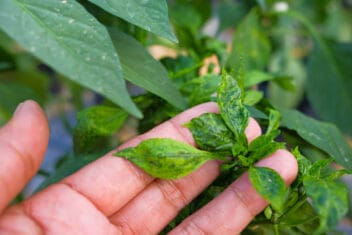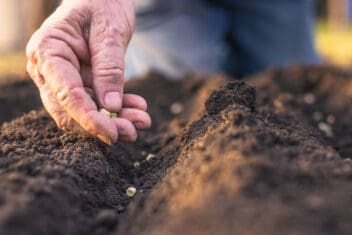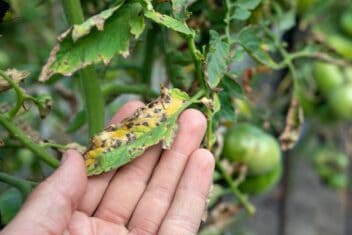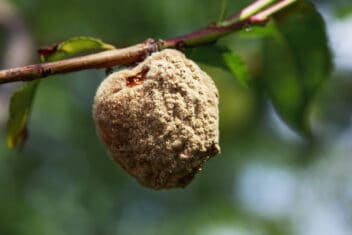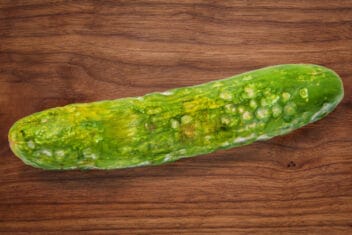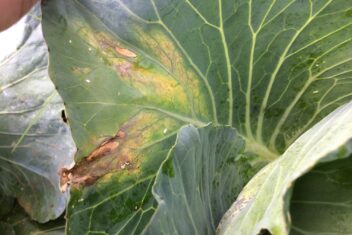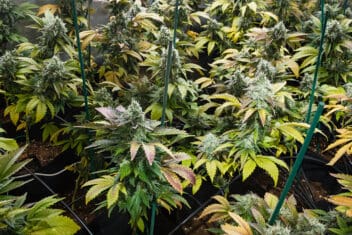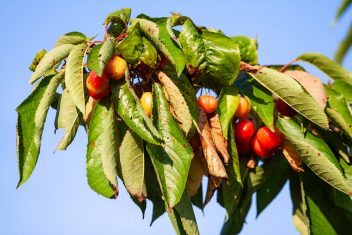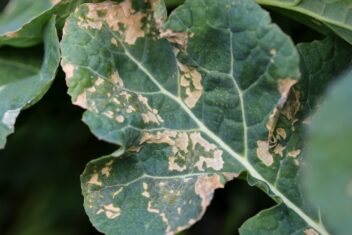I thought we were doing the right thing by adding loads of manure to our garden last fall. All that nitrogen would be great for our vegetables, right?
Wrong.
While manure is an excellent source of nutrients for the garden, it does need time to break down as well as other ingredients to help balance it out. Plants need nitrogen, but they also need phosphorus, potassium, calcium, magnesium…the list goes on and on.
When provided in excess, nitrogen can not only cause excessive foliage production in your plants, but it can lead to other problems, too.
One of those problems is potato scab – the biggest issue we faced after applying too much manure last fall.
Here are some tips on how to prevent and treat potato scab in your garden.
What is Potato Scab?
Potato scab is a disease that affects – you guessed it! – potatoes. It can happen in any growing environment, including directly in the ground, in straw, in a container, you name it.
Usually, you’ll be able to tell it’s potato scab that ruined your crop right away. There aren’t many diseases that create quite the same appearance. Generally, you’ll notice signs of scab at harvest time. These symptoms can vary depending on where you grew your potatoes as well as the type of potatoes you grew.
However, potato scab usually presents as raised or sunken patches on the skin of your potatoes. They look just like crusty scabs. In severe cases, entire portions of the potato may succumb to deep pits.
Potato scab is caused by a type of bacteria, Streptomyces scabies. It can occur in most soil types and it is caused by a variety of factors.
How to Prevent Potato Scab
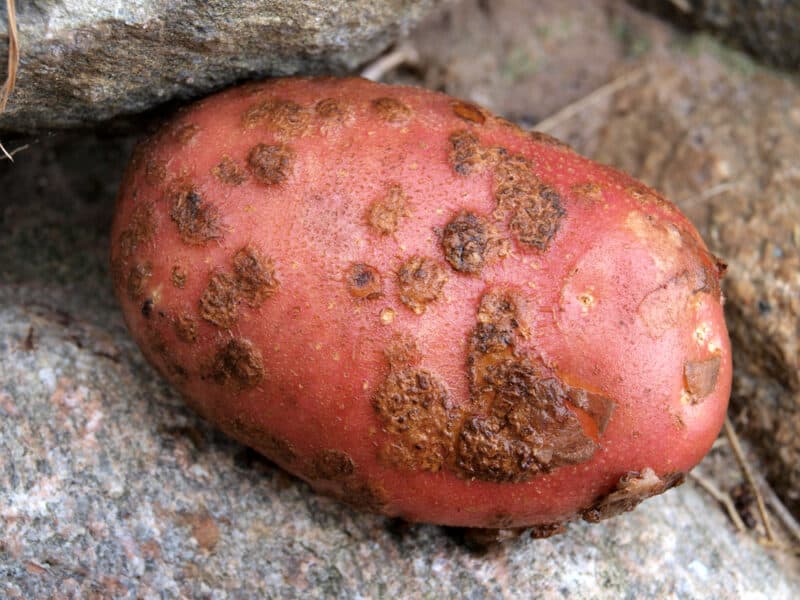
Potato scab can be introduced to your potatoes in several ways. To prevent it, you will need to take some of the following steps.
1. Choose Resistant Varieties
One of the easiest ways to prevent scab in the garden is to choose potatoes that aren’t vulnerable, to begin with. Sometimes, you might introduce S. scabies to the garden without realizing it – by planting infected seed stock.
There’s no way of knowing whether this is the case, but do your best to purchase seed stock from reputable nurseries. Also, consider planting resistant-varieties of potatoes. Thicker-skinned varieties tend to be less susceptible.
Keep in mind that potato scab can affect other root vegetables besides potatoes, despite the highly specific name. S. scabies can go after plants like turnips, carrots, parsnips, beets, and rutabagas, too.
Some good scab-resistant potato varieties to consider planting include:
- Yukon Gold
- Katahdin
- Kennebec
- Shepody
- Defender
- Dark Red Norland
- Russet Burbank
Check with your local cooperative extension to see what they recommend growing in your area. In most cases, planting seeds that are certified and scab-free will set you off on the right start. Whatever you do, when saving tubers to plant next year, don’t use eyes from infected plants. You’ll restart the process all over again!
2. Rotate Crops
This is a good rule of thumb to follow when planting any kind of crops in your garden, but especially when it comes to preventing scab. Always rotate crops so that you don’t grow the same kind of plant in the same spot 2 years in a row. With potatoes, try to make it just once every 3 years.
You can rotate your potatoes with plants like beans, corn, peas, tomatoes, or peppers – in other words, plants that don’t get scab or similar diseases. Avoid planting carrots, beets, rutabagas, or similar root crops where potatoes were grown, since they, too, can fall victim to scab.
3. Test and Amend Your Soil
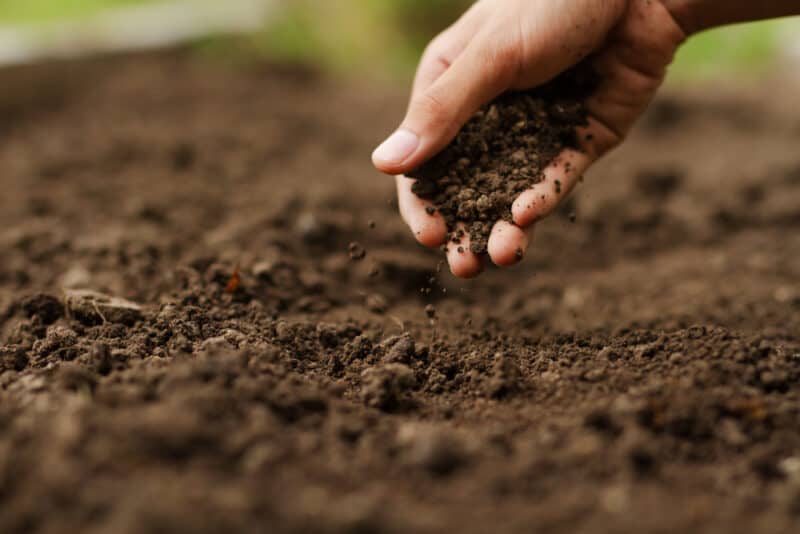
One of the biggest culprits in a potato scab outbreak is the soil pH. This was the problem we created for ourselves – and how we suffered from scab in our garden.
The thing is, potato scab is rarely a problem when the soil pH is less than 5.2. More acidic soils are ideal for producing scab-free potatoes. Although you might not want this much acidity for other crops, most gardening experts agree that a pH of less than 7 (around 6.5) is perfect for most kinds of crops as well as for preventing scab.
Be sure you test your soil before adding any kind of amendment.
It is also important to note that the type of soil you have may play a role in the development of potato scab, too. Soils that are coarse and heavy are more likely to cause issues with scab, with those that are heavily eroded or that dry out rapidly also suffering more from this disease.
Whenever possible, amend your soil so that it is light and loamy to prevent scab problems.
4. Don’t Over-Fertilize
Again, this is where we made our major misstep. We assumed the more manure – the merrier. However, it’s important that you actually test the soil to see what it might be deficient in before you do any fertilizing or planting.
Try not to use fertilizers like fresh manure (ahem) or potassium nitrate. These increase soil pH rapidly, which can lead to scab.
That said, some potato growers recommend spreading agricultural gypsum before planting. This raises the calcium level in the soil and can help your plants build strong cell walls that resist scab infection.
5. Mind Your Watering
Another issue that can lead to potato scab is inconsistent watering. Both too little and too much water can cause issues like scab or too-tiny tubers. While consistent watering is important at all points in growing your potatoes, it is most important in the 2-6 weeks after tubers have formed.
6. Use a Cover Crop
Growing a cover crop is another good way to prevent scab. Rotating your potatoes with small grains and corn can work, or you can grow a cover crop like alfalfa in the off-season. Do your research on which cover crops will work best in your area, though, as some are not recommended for various climates.
Other cover crops to consider include canola and mustard. Sowing these before planting potatoes can reduce infection.
Avoid red clover as a cover crop, as this can encourage scab development, too.
Treating Potato Scab
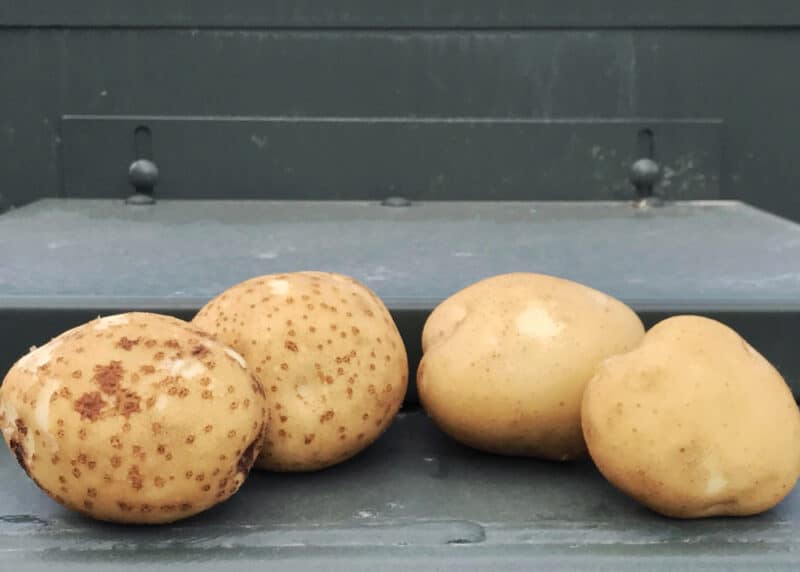
Once potato scab has affected your tubers, the bad news is that there’s no turning back. You can’t get rid of the scabby skin and while the potatoes tend to be about the same size and the yields about the same, a scabby crop won’t hold up as well in storage (or be as appealing).
S. scabies can live in the soil for many years, even when potato crops aren’t grown. That’s why following the steps above is so essential when it comes to knocking this disease out for good.
However, if you’re planting in an area in which you aren’t sure if scab is a problem, you can treat your seed potatoes before planting with sulfur fungicide. This can prevent the introduction of new scab bacteria to the soil and make it less likely that this year’s crop will succumb.
Can I Eat Potatoes With Scab?
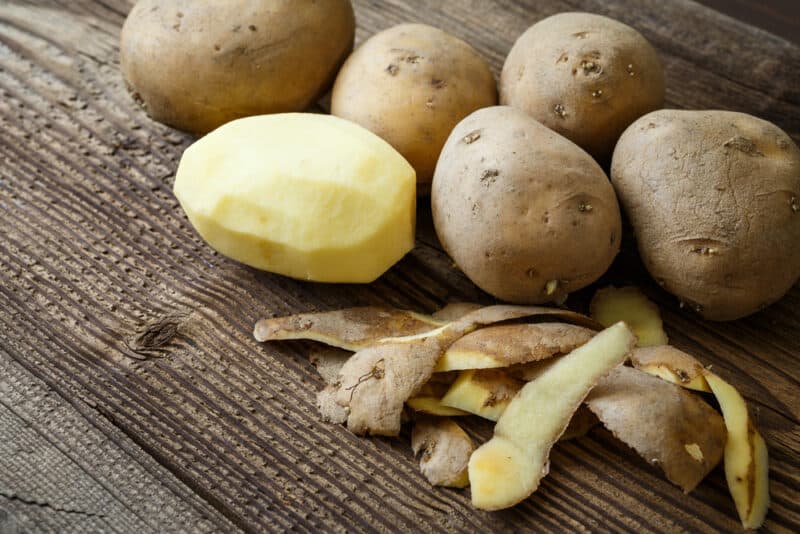
The good news – if there is any – about potato scab is that infected and scabby potato tubers are still edible. Although they are ugly to look at, they just need to be peeled before you eat them.
I recommend using them up right away, as potatoes with scabby skin don’t hold up well to long term storage and become soft and rot quite quickly. You can peel the skin and cube the potatoes before canning them if you find that you aren’t able to eat them up all the way. Potatoes can also be frozen.
Fortunately, we only planted about half of our potato crop in the raised bed that contained all the manure. The rest of the potatoes we planted under straw – simply because we had extra potatoes and wanted to experiment! We were still blessed with an abundant crop, and the potatoes that were scabby we just ate up quickly rather than putting them into storage.
Next year, we’ll use soil that’s more balanced to plant our potatoes – and hopefully, there will be no more scab in our future.

